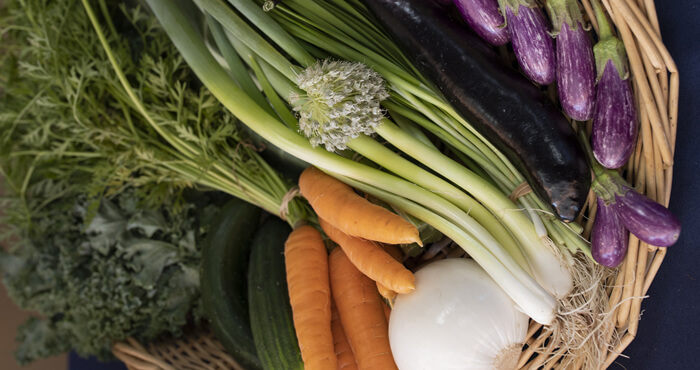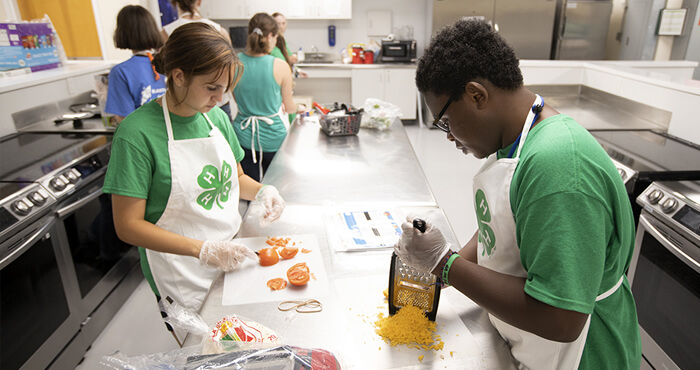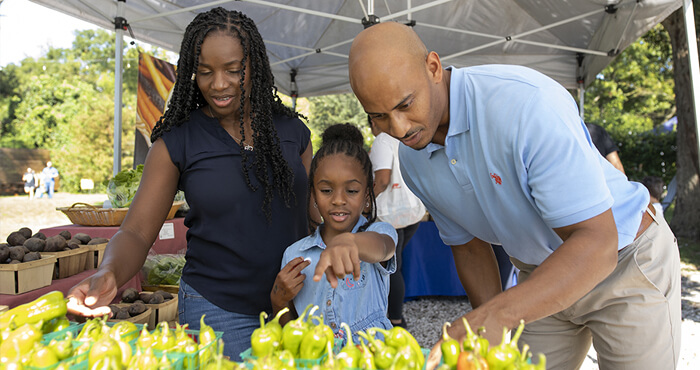
Saving & Using Rainwater
Groundwater resources in Florida face high demand for consumption, agricultural, and industry needs. Taking advantage of Florida’s seasonal rainfall can reduce pressure on groundwater for non-potable uses during drier seasons.
For the homeowner, saving and using rainwater reduces your water bills and allows you to use the stored water at your discretion—it is not public water, so you do not have to follow water restrictions.
Depending on your water needs and the amount you want to store, you can incorporate rain gardens and ponds, rain barrels, or cisterns into your landscape.
Rain Gardens
Rain gardens are water retention zones for drainage. They help prevent erosion and runoff and can also filter out pollutants in surface water. Depending on the liner, the water stays in the garden until it's used or it percolates into the soil.
To plan your rain garden, take advantage of existing drainage; place gardens where water already accumulates. Make sure the garden drains water away from structures to prevent flooding.
To build a rain garden, partially excavate the site, then backfill with stone and gravel. Check local and homeowner’s association rules about whether or not you will need a liner or sump. You can also add a liner to turn the collection area into a pond, rather than a groundwater recharge area.
Landscape using resilient plants that can withstand periods of inundation and drought. Water the plants, mulch, and weed the garden to ensure successful establishment. Once established, the garden should be relatively low maintenance. Supplemental irrigation during dry times will depend on plant choice.
For more on plant selection for your rain garden, visit “Rain Garden” on the Gardening Solutions website.
Rain Barrels
Rain barrels can refer to any container that captures rainwater. They are usually large containers situated under downspouts to catch roof runoff. Rain barrels are fitted with screens over their openings to keep out debris and mosquitoes.
You can purchase a rain barrel or create one yourself when using rainwater for various purposes. There are many online resources as well as information and classes offered through local Extension offices. Check the Extension calendar for any classes in your area.
One inch of rainwater per 1,000 square feet of roof will result in about 600 gallons of collected water. You can set up a system of rain barrels, each collecting overflow from the previous one in line, to hold the amount of water you want to store. You may want one rain barrel or you may want ten.
Most people install spigots on their rain barrels and attach hoses to use the stored water. Depending on the elevation of the rain barrels, you can use gravity or pumps to move the water through the hose to where you need it.
Cisterns
Cisterns are a good choice for those who want a greater storage capacity than rain barrels provide. A 6’x6’x6’ cistern can hold 1,600 gallons.
Cisterns can be above- or below-ground or partially submerged. They need to be watertight, have enclosed lids, and be made of non-reactive material (e.g. reinforced concrete, galvanized steel, or plastic).
More so than rain barrels, cisterns need good pre-filtration of rainwater coming from the catchment area (usually a roof). Regularly clean gutters and downspouts, and consider installing gutter guards. Do not collect water under overhanging trees.
Keep in mind you will need access to the inside of the cistern for cleaning. Other design considerations include an overflow pipe, a pretreatment zone with a screen and filter, screened input and outlet valves to control water flow, and weight load.
One gallon of water weighs 8.3 pounds, and a cubic foot, 62.4 pounds. If you have an elevated tank, make sure it is placed on a structurally sound platform.
Local regulations and construction costs may limit your cistern installation. Check with city or county offices to see what permits you may need. Also try searching for grants offered by community, regional, or national organizations to help offset costs.
Using Rainwater
All of these methods are for collecting, storing, and using rainwater. Your stored water can be used for uses that do not require potable water. (Do not use stored water for drinking.)
Irrigation
A popular option is using the water to irrigate lawns and gardens. You can install a pump or use gravity to feed hoses. Another option is to just hand water. Make sure you set up your tanks for easy access to spigots, outlets, or lids.
For gravity-fed irrigation: Every 2 ½ feet of elevation of the water source above the water outlet (e.g., the elevation of the tank versus the elevation of the garden) will create one pound of pressure. Keep in mind that friction in the pipe or hose will reduce water pressure.
Contact your plumbing or building department before connecting a pump, plumbing, or irrigation lines to see if you will need backflow protection for your potable water line. Do not connect your rain barrel or cistern to your in-home plumbing because of the risk of contaminating potable water.
Other Uses
Beyond watering your garden, stored water can be used to wash vehicles; fill ponds, fountains, and swimming pools; and used in home toilets and washers (check local regulations).
Saving and using rainwater is a great way to conserve water, decrease your water bill, reduce your impact on groundwater sources, minimize your vulnerability to drought, and create a sustainable landscape.
For more information on rainwater harvesting and water conservation, talk with your local Extension agent.
Resources
Other UF/IFAS Sites
- Gardening Solutions
- Entomology and Nematology Department
- Environmental Horticulture Department
- FAWN: Florida Automated Weather Network
- Florida-Friendly Landscaping™ Program
- Florida Master Gardener Program
- IPM Florida
- Pesticide Information Office
UF/IFAS Publications
- Florida-Friendly Landscaping™ Program
- Central Florida Gardening and Landscaping Fact Sheets
- Starting a Garden
State & Federal Agencies
- Florida Department of Agriculture and Consumer Services (FDACS)
- Florida Department of Environmental Protection (FDEP)
- Florida Energy Systems Consortium (FESC)
- U.S. Environmental Protection Agency (EPA)
- USDA Plant Hardiness Zone Map--U.S. National Arboretum
Organizations & Associations
- American Community Gardening Association
- American Horticultural Society
- Florida Native Plant Society
- Florida Nursery, Growers and Landscape Association (FNGLA)
- North American Native Plant Society
Other Sites & Publications
UF/IFAS Mobile Web Apps



.jpg)

.jpg)
